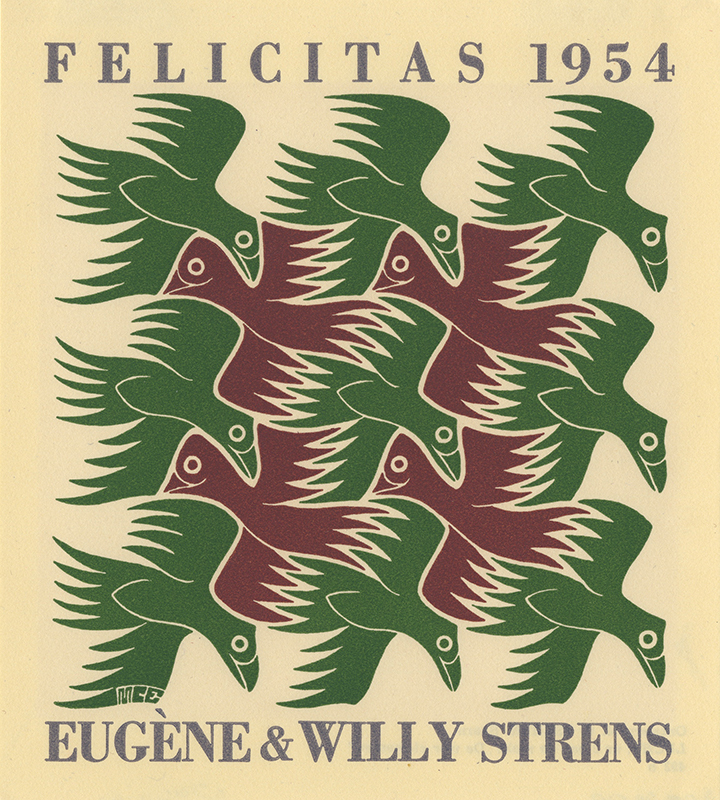
19th, 20th & 21st Century Fine Prints
707-546-7352 · fax 707-546-7924 · web: www.annexgalleries.com · email: artannex@aol.com
'Air', Eugène and Willy Strens’ New Year's Greeting card for 1954 by M.C. Escher

'Air', Eugène and Willy Strens’ New Year's Greeting card for 1954
M.C. Escher
'Air', Eugène and Willy Strens’ New Year's Greeting card for 1954
M.C. Escher
1898 - 1972 (biography)Air is the second in the series of four elements. All are color woodcuts with letterpress that were commissioned by Eugène Strens as New Year’s greeting cards. Despite the letterpress dates 1953, 1954, 1955, and 1956, these were all created in October 1952. These cards are great examples of M.C. Escher’s mastery of optics and design.
Dutch engineer, amateur mathematician, meteorologist and astronomer, with an interest in bookplates, chess and recreational mathematics, Eugène Strens was born in 1899 in Roermond in southern Netherlands. He was broadly educated in the Sciences and Humanities, eventually studying Electrical Engineering at the Delft Technische Hogeschool. He completed his studies after two years of military service but pursued his profession for only a short while being of independent means and having very wide-ranging interests. He went underground in 1943 and concentrated on math puzzles. From 1945 on he lived in Breda, Netherlands where he died in 1980. He was a friend of the mathematical artist Maurits Cornelis Escher from whom he commissioned many works; he also maintained an active correspondence with fellow aficionados in all his areas of interest. He collected over eleven hundred books on chess, a hundred thousand Ex Libris (bookplates); a substantial collection of graphic art; over 2000 volumes on recreational mathematics; as well as newspaper clippings, periodicals and manuscripts.
